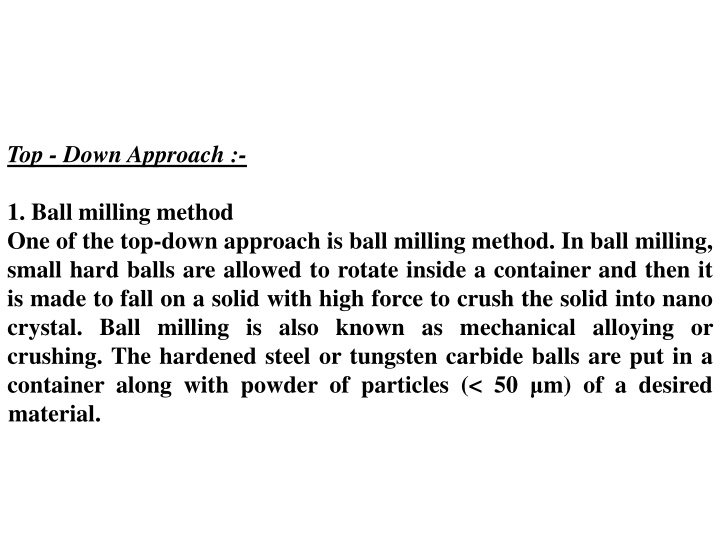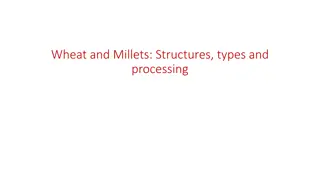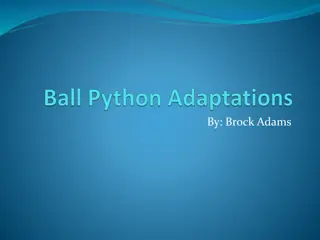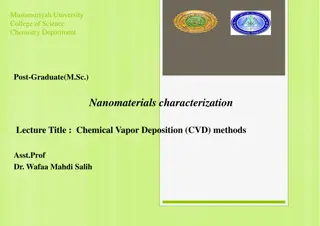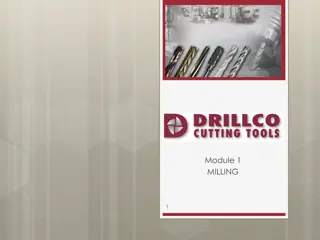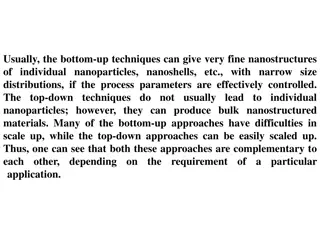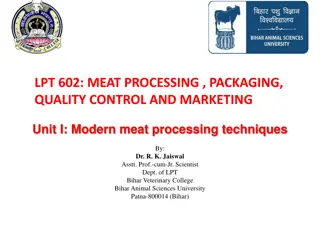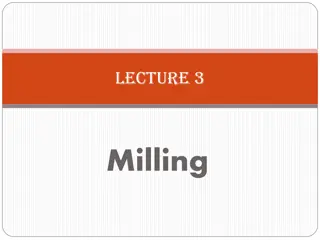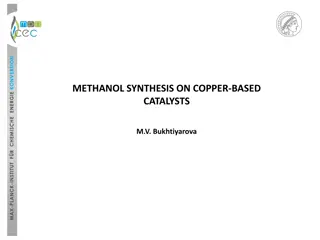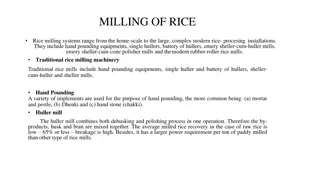Nanomaterial Synthesis Techniques: Ball Milling and Electrodeposition
Ball milling and electrodeposition are top-down approaches for synthesizing nanomaterials. Ball milling involves using small hard balls to crush solid materials into nano crystals, while electrodeposition creates nano films by passing current through electrodes in an electrolyte. These techniques offer precise control over particle size and film thickness, making them suitable for various applications in nanotechnology.
Download Presentation

Please find below an Image/Link to download the presentation.
The content on the website is provided AS IS for your information and personal use only. It may not be sold, licensed, or shared on other websites without obtaining consent from the author.If you encounter any issues during the download, it is possible that the publisher has removed the file from their server.
You are allowed to download the files provided on this website for personal or commercial use, subject to the condition that they are used lawfully. All files are the property of their respective owners.
The content on the website is provided AS IS for your information and personal use only. It may not be sold, licensed, or shared on other websites without obtaining consent from the author.
E N D
Presentation Transcript
Top - Down Approach :- 1. Ball milling method One of the top-down approach is ball milling method. In ball milling, small hard balls are allowed to rotate inside a container and then it is made to fall on a solid with high force to crush the solid into nano crystal. Ball milling is also known as mechanical alloying or crushing. The hardened steel or tungsten carbide balls are put in a container along with powder of particles (< 50 m) of a desired material.
The container is closed with tight lids. When the container is rotating around the central axis, the material is forced to press against the walls. The milling balls impart energy on collision and produce smaller grain size of nano particle. Few milligram to several kilograms of nanoparticles can be synthesized in a short time. This technique can be operated at large scale.
. Fig. 1. Schematic representation of the principle of mechanical milling
2. Electro-deposition Method This technique is used generally in electroplating and in the production of nano-films. In this technique, two electrodes (anode E1 and cathode E2) are immersed inside the electrolyte [aqueous solutions of salt, acids etc]. When the current is passed through the electrodes, certain mass of substance is liberated from one electrode say for example from electrode E1 and is deposited on the surface of the other electrode say E2 and hence forms a thin nano - film on the surface of the electrode E2. The thickness of the nano-films can be adjusted by controlling the current and the time of deposition. These films are mechanically robust, highly flat and uniform.
The principle of electrodeposition is inducing chemical reactions in an aqueous electrolyte solution with the help of applied voltage, e.g. this is the process of using electrical current to coat an electrically conductive object with a relatively thin layer of metal. This method is relevant to deposition of nanostructured materials include metal oxides and chalcogenides. Electrodeposition is relatively cheap and can be performed at low temperatures which will minimize interdiffusion of materials in the case of a multilayered preparation. thin film
The film thickness can be controlled by monitoring the amount of charge delivered, whereas the deposition rate can be followed by the variation of the current with time. The composition and defect chemistry can be controlled by the magnitude of the applied potential, which can be used to deposit nonequilibrium phases. Pulsing or cycling the applied current or potential in a solution containing a mixture of precursors allows the production of a multilayered material.
The potential during the pulse will determine the species deposited whilst the thickness of individual layers is determined by the charge passed. Alternatively, the substrate can be transferred periodically from one electrolytic cell to another. The final films can range in thickness from a few nanometers to tens of microns and can be deposited onto large specimen areas of complex shape, making the process highly suitable for industrial use.
Thermodynamic and Kinetics of Electrodeposition .The nucleation of nanostructures on the electrode substrate is influenced by the crystal structure of the substrate, specific free surface energy, adhesion energy, lattice orientation of the electrode surface, and crystallographic lattice mismatch at the nucleus-substrate interface boundary.
.The final size distribution of the electrodeposits strongly depends on the kinetics of the nucleation and growth: .Instantaneous nucleation: all the nuclei form instantaneously on the electrode substrate, and subsequently grow with the time of electrodeposition. .Progressive nucleation: the number of nuclei that are formed is a function of time of electrodeposition. These nuclei gradually grow and overlap, and therefore, the progressive nucleation process exhibits zones of reduced nucleation rate around the growing stable nuclei.
